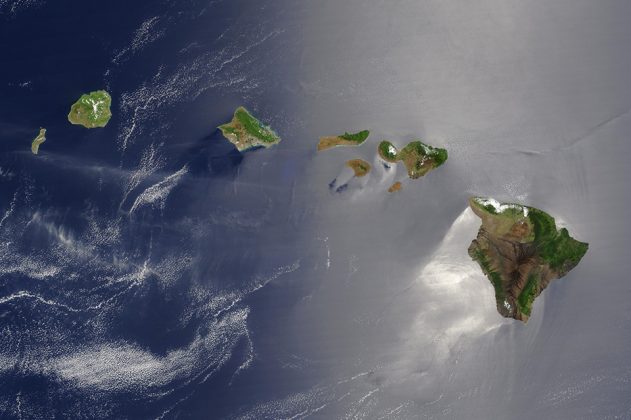A BIT ABOUT PLANETARY WIND SYSTEMS
With – Dom Moore
We wouldn’t get far in this sport without the power of the wind. No waves, and of course no downwinders. In fact, a lot of things would be very different without wind. The modern horse was hunted to extinction in what is now the USA some 12,000 years ago, returning only when the Spanish reintroduced it when they sailed over on the trade winds in the 1500’s, so there’d be no horses, or English or Spanish speaking people in America.
Actually, the entire distribution of people around the world would be very different; just a bunch of tribes stuck on their continents slowly drifting away from one another. Presumably then the entire surface of Northern Europe would also be covered by trees as there would have been no reason to chop them down to make ships.
Of course we don’t have to worry about the wind blowing itself out because as we’ll recall from our primary school days, winds are generated by the warmth from the Sun that reaches Earth. To quickly recap that – imagine you’re in a room with a radiator and one end and a block of ice at the other. The air molecules above the radiator are warmed, disperses and becomes less dense and rise. The air molecules around the ice block are cooled, slow down and condense and sink. This gives us a basic convection system. What happens next is that around the lower level, the cold dense air at one end of the room flows towards the void from the risen warm air at the other end of the room. Then up around the ceiling the warm air that has risen flows towards the void from the cold, sinking air, so we have a ‘cell’ containing a circular pattern horizontal winds and rising and sinking air. And a very big version of this pattern is repeated latitudinally along the Earth’s surface.
Latitudinal Atmospheric Circulation
Picture a circle. Now focus on the top right quarter of it. The curved part is a cross section of the Earth’s in the northern hemisphere. Between the equator and a third of the way up, imagine a circular cell like the one described above rotating in an anti-clockwise direction. The warm air is rising at the equator and migrating pole-ward at high altitude while at sea level air is returning to the equator from a latitude of 30 degrees. Then above that in the mid latitudes we have another cell rotating in a clockwise direction with air at sea level migrating poleward. Finally at high latitudes between 60 degrees and the north pole the cell is rotating anti-clockwise again bringing cold air southwards. These cells encircle the planet (and are repeated in a mirror image in the southern hemisphere) rotating the air in the atmosphere and spreading it from the equator to the poles. But we don’t feel the wind blowing in a straight north and south direction, instead we have our trade winds and westerlies. So what causes that?
“With a little bit of information you can look at a map of the world and predict the prevailing and local wind conditions and plan your trips without relying on second hand info”
33 rpm
If you’re unfortunately fortunate enough to remember listening to music on vinyl, you’ll probably recall gazing at the rotating black disc and musing how the ‘track one’ is travelling faster than the label in the middle since it has further to go with each revolution. It is the same with our planet; at the equator as the earth spins you are moving through space at around 1670 km/h while at the Shetland Islands you’re going around 850 km/h and this differential is known as the Coriolis Effect. It deflects the north-south flow of wind in the cells because the origin and end points of the horizontal winds are moving at different speeds. Wind returning to the equator gets dragged into a north easterly trade wind pattern and mid latitude wind gets deflected into a westerly pattern. If I’ve explained this poorly the concept of deflection can be simplified. Imagine you’re walking forwards in a straight line. Ahead of you is a travellator moving sideways left to right – you step on to it as you walk forward. Has your line over the ground changed?
As well as the Coriolis Effect east to west winds are encouraged by the difference in heat capacity between the oceans the continents where sites at the same latitude in different locations will have different temperatures. The USA for example heats up much quicker than the Pacific Ocean creating a horizontal wind pattern in an east to west direction.
The source
So all of this starts at the Equator with warm air rising. And why are regions at the Equator warmer than more poleward regions? It’s not because the Equator is closer to the sun – if proximity were the case then January would be summer for the entire planet since the Earth is 5,000,000 km closer to the sun during that month – but because of the angle. The Equatorial regions face quite squarely towards the sun, meaning that solar energy remains concentrated and has a direct path through the atmosphere. As you head up the globe the land slopes away from the sun, meaning that the same amount of solar energy is spread over a greater land area, and it has a longer path through the atmosphere, and the net result is that it gets cooler the further away you get from the Equator.
About 4.5 billion years ago the proto planet Theia smacked into Earth (or Gaia as we called it then) and it’s thought that collision is what gave our planet its 23 degree tilt off of vertical. This gives us seasons as different parts of the globe receive different amounts of solar radiation as we journey around the Sun, which accounts for trade winds typically being stronger in summer. To wrap all that up we can say that regions between the Equator and 30 degrees will have a north easterly prevailing wind, and regions between 30 degrees and 60 degrees will have a south westerly prevailing wind.
As well as explaining the patterns of wind on a global basis, convection cells are apparent on a much smaller scale too, such as local sea and land breezes. Excepting the Coriolis Effect, all the factors are the same – one area heating up faster than a neighbouring area to set up the convection cell and we feel it at ground level as horizontal wind. Depending on the type of surface of the land next to the water, different amounts of solar radiation are absorbed or reflected. Conifer forests in summer are very absorbent and only reflect around 9 % of received solar radiation meaning there’s a lot of energy to heat the land up and get the cycle started. By contrast, desert areas reflect around 40 % of received solar radiation, so you might get a couple more hours glassy surfing in Morocco than you would around the pine forests of south west France before the onshores kick in.
So with a little bit of information you can look at a map of the world and predict the prevailing and local wind conditions and plan your trips without relying on second hand info. Assuming we don’t get any complains we’ll press on with this series and next issue we’ll be having a look at the exciting consequence of all this wind: waves! SUP


